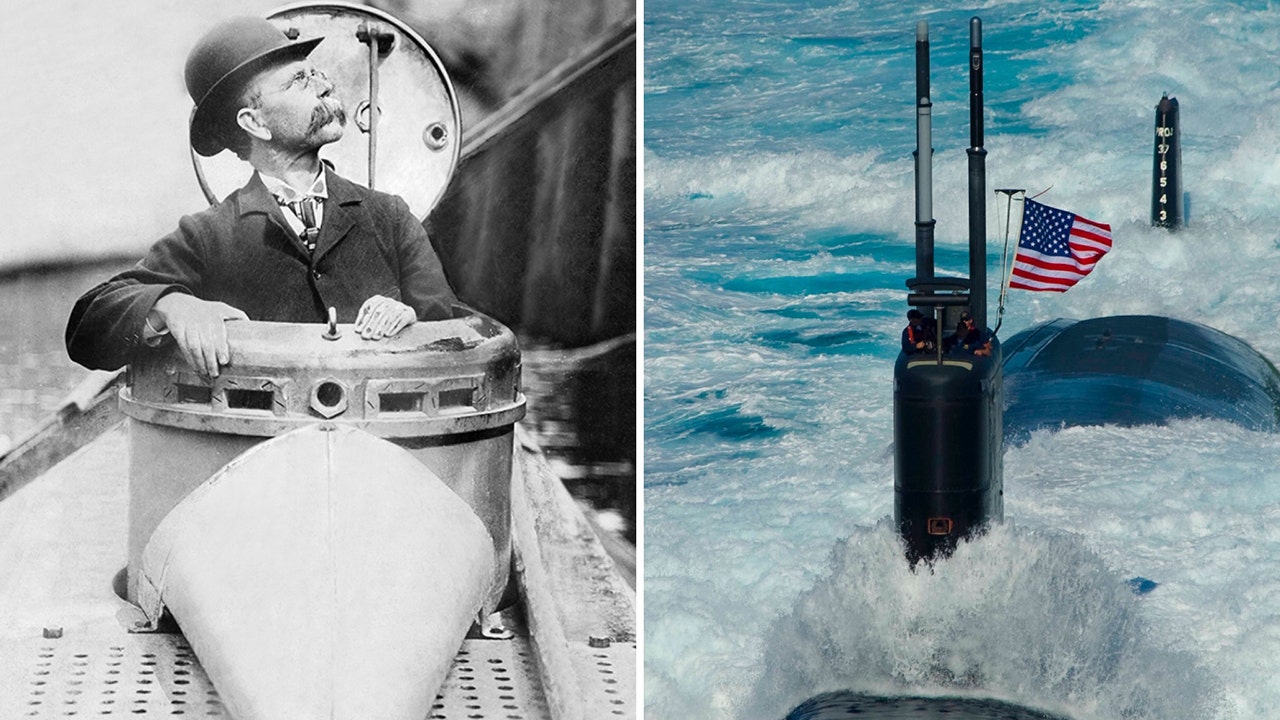John Philip Holland, hailed as the “father of the modern submarine,” was an extraordinary visionary who transcended boundaries to revolutionize maritime warfare. Despite lacking formal training in mechanics, engineering, or the military, Holland’s brilliant and instinctive mind led him to conceive the audacious idea of developing a silent underwater vessel capable of combat. Lawrence Goldstone, a biographer of Holland, lauds his talent as a remarkable engineer who leveraged the principles of undersea navigation to create a game-changing weapon.
The USS Holland (SS-1), commissioned in 1900, marked the birth of the first U.S. Navy submarine, inspired by Holland’s groundbreaking design. This cutting-edge American vessel sparked a revolution in military technology, with countries like France, Japan, and Britain pursuing their own submarine designs based on Holland’s early prototypes. Holland’s impact was so profound that even Germany, after experiencing failures with its own experiments, decided to explore the possibilities of Holland’s vessel.
However, despite his remarkable achievements, Holland faced numerous challenges in his personal and professional life. Isaac Rice, a shrewd electric-automobile pioneer, seized control of Holland’s company and intellectual property, transforming it into Electric Boat, which has since been instrumental in constructing submarines for the U.S. Navy and various other nations.
Tragically, Holland died in obscurity and poverty, with his genius unable to transcend these unfortunate circumstances. Goldstone laments the untapped potential of Holland’s career, describing him as naive when it came to turning his invention into a practical product. Nevertheless, Holland’s legacy endures, as his submarine design principles continue to shape the construction of modern nuclear-powered submarines in America.
Looking back at Holland’s early life, he was born in Ireland to parents who were both native Irish speakers. Growing up in a nation oppressed under British rule, Holland’s desire to contribute to the cause of Irish Independence led him towards envisioning the submarine as a tool for advancing the nation’s agenda. Holland pursued education and found himself teaching mathematics and music in the Christian Brothers School in Limerick.
Holland’s mechanical talents were evident through his creation of a submersible mechanical duck, capable of walking, swimming, diving, and resurfacing. The source of his mechanical aptitude remains a mystery to biographers. However, his upbringing during a time of great innovation and legendary tales of undersea adventure could have fueled his inspiration. Examples include the Turtle, a one-man submersible built by Connecticut colonist David Bushnell during the American Revolution, and the H.L. Hunley, a Confederate submarine that sunk the USS Housatonic during the American Civil War.
It was in this vibrant climate that Holland channeled his dreams into reality when Jules Verne’s novel “20,000 Leagues Under the Sea” was published in 1870. Inspired by the book, Holland embarked on his journey to the United States, settling first in Boston and then in Paterson, New Jersey. Presenting his submarine designs to the U.S. Navy in 1875, Holland faced rejection from Navy officials who deemed his plans unworkable.
However, Holland found support among Irish benefactors who shared his vision. The American Fenian Society, a group of Irish patriots committed to undermining England’s naval supremacy and achieving Irish independence, commissioned Holland to construct a submarine. Although his first model sank during testing in the Passaic River, Holland’s second attempt, known as the Fenian Ram, successfully launched in New York City in 1881. This fully operational vessel, equipped with modern submarine features, including torpedo capabilities and dual power systems, startled witnesses with its sudden appearances from beneath the waves.
John Philip Holland’s pioneering spirit and relentless pursuit of his dreams transformed naval warfare forever. In spite of the challenges he faced and his untimely demise in poverty, his legacy lives on. Holland’s innovative designs and engineering principles continue to shape submarine technology, ensuring his place in history as a genius whose contributions to modern civilization remain immeasurable.
Denial of responsibility! VigourTimes is an automatic aggregator of Global media. In each content, the hyperlink to the primary source is specified. All trademarks belong to their rightful owners, and all materials to their authors. For any complaint, please reach us at – [email protected]. We will take necessary action within 24 hours.


